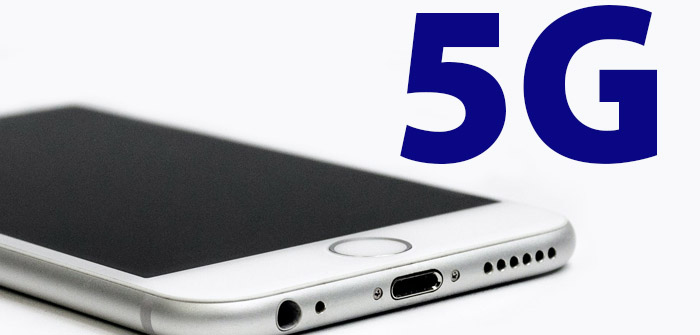(Photo | Cascade Business News)
Everyone has heard of the next new technology leap in mobile communications, 5G (i.e. “Fifth Generation”), along with the concerns many have over the potential harm it may cause to humans. We will tackle the facts and the FUD (Fear, Uncertainty and Doubt) surrounding 5G.
5G — What Is It?
Our mobile networks are upgrading to a locus of technologies referred to as 5G with data rates of up to 20 gigabytes per second and latency (i.e. delay) of 1 millisecond. This big leap in communication tech is creating uses of mobile technology way beyond what most people can conceive of besides just streaming Neflix without a glitch.
Remote surgery has been around for some time, but the low bandwidth and potentially dangerous delay in response time was not safe enough for precision surgery. Now it is. With the 5G increase in bandwidth and reduction in delay, a doctor can now perform operations using robotics from an office in Bend to a remote clinic just about anywhere a 5G signal can reach, with the precision needed and virtually no delay between the doctor digitally moving a robotic “hand” to when the robot responds correspondingly. Imagine what other applications now are possible with this level of bandwidth and near-zero delay: remote drone/autonomous-vehicle operators, virtual ship captains and crew, FedEx and UPS pilots remotely flying cargo planes, or heat-resistant firefighting robots controlled by fire crews safely situated in a control center.
How Will It Be Deployed?
5G uses higher frequency millimeter radio waves of 25 – 39 GHz, at the low-end of the millimeter wave band. This higher frequency allows for download speeds in the range of one to three gigabits per second (Gbps) but its range of about a mile is much shorter than current 4G networks. This requires more antennas to reach the same coverage as 4G. Another downside is the higher frequencies have a tough time penetrating obstacles such as walls and other solid structures which cuts its effective range even further. More towers will be needed in dense cities to meet the demand.
To provide coverage to match 4G, 5G will be broadcasted in as many as three bandwidth levels: low, medium and high. Low and medium will use lower radio frequencies which solve the range and penetration issues but will also have bandwidths slightly more than 4G. To get the full-bandwidth capabilities of 5G will require the high frequencies with limited range and wall penetration issues.
One more note, 5G will not replace 4G. They will coexist until 5G is ubiquitous and fully covers the areas 4G currently services. Normal phone traffic will most likely still be carried by 4G towers while 5G handles the higher bandwidth traffic where possible.
Do I Need a 5G Phone?
In short, yes, you will need to upgrade your phone to a 5G-enabled device. This is where some research on your part is required before buying. For example, Verizon is rolling out high frequency towers while T-Mobile and Sprint plan to start out with the lower frequency bands which means better cell coverage but much lower bandwidth abilities. AT&T plans to do high frequency, but they are branding their recent 4G upgrades as 5GE (5G Evolution). In my opinion, AT&T is intentionally misleading consumers due to their lack of a deployable true 5G solution. I suggest Verizon 5G if you are craving more bandwidth.
Does 5G Harm Humans?
Many people are concerned about the potential harm the higher frequencies may cause to humans. There is a lot of information — and outright bunk — about this topic floating on the Internet. As a tech guy who focused heavily on microwave in my Electrical Engineering degree and in my first job out of college, I take a different position. We had the same wave of claims about microwave ovens, WiFi and cell phones when they first came out. All debunked by years of studies after mass adoption.
Millimeter waves (ex. 5G) and other radio waves, along with visible light, are non-ionizing, meaning they do not break down molecular bonds such as cell tissue or blood. They are higher frequencies than current broadcast frequencies, but they are still below the visible light frequencies and far below ionizing radiation like shortwaves ultraviolet light, x-rays and gamma rays.
On cell phones, many orgs quote the WHO cancer research center from 2011 stating cell phones are “possibly carcinogenic.” What they ignore is the WHO did this only after a 2010 study they conducted on cell phones resulted with no determination of risk. Just because results are undetermined does not mean a risk exist, but a “possibility.” Listening to rage music could “possibly” cause brain damage.
Among all the possible threats, exposure to solar (ex. ultraviolet waves), natural earth and space radiation are substantially more dangerous. I have read through many studies on both sides. The legitimate (i.e. not driven by special interest groups from either side) studies many use as a reference against 5G-related frequencies state that the effects of 5G towers broadcasting millimeter-wave signals are unknown or indeterminate.
There are thousands of published and peer-reviewed research papers that have not found any conclusive evidence (to date) of biological/cellular effects from them as the cell tower technology is currently being deployed.
Here are some trusted references to read:
This one from the International Journal of Hygiene and Environmental Health which points towards concerns, “growing doubts”, but has plenty of study references: bit.ly/IJ-Of-Hygiene-5G-Health-Implications.
This is from Cancer.Org (American Cancer Society) which states cell phones do not cause cancer: bit.ly/ACS-Cell-Phones.
From the FDA, they conclude millimeter-wave/RF do not harm humans: bit.ly/FDA-RF-Energy-Exposure.
From the National Institute of Health’s (NIH) National Toxicology Program (NTP). NTP states no evidence: bit.ly/NIH-NTP-5G.
… but will continue to research, as previous inconclusive 3G/4G studies point to some possibilities: bit.ly/NIH-NTP-Cell-Phone-RF-Radiation.
Here is a key excerpt from this article:
“Millimeter waves (such as used by 5G) do not travel as far and do not penetrate the body as deeply as do the wavelengths from the lower frequencies. Millimeter waves are likely to penetrate no deeper than the skin, whereas the lower frequencies” (such as in current 3G and 4G technology) “have been shown to penetrate at least three to four inches into the human body.”
To wit, 5G frequencies, although higher, are less invasive to the human body as current 3G and 4G cellular technologies.
Bottom-Line: No Tin-Foil Hats Required
As with previous waves of complex technology, many people jump to unsubstantiated conclusions and rally to oppose based on misinformation. In the case of 5G, some are resorting to destroying 5G towers. No doubt people were burning down telegraph poles in the 1800’s. It is important for scientists and researchers to heavily scrutinize any consumer-deployed technology and to have their findings peer-reviewed. It is also important for consumers to listen to unbiased, neutral experts and not special interests (ex. media looking for ratings, competitive technology companies, AT&T pushing false 5GE, antagonistic nation-states, etc.).
There is always a possibility but, to date, there is no evidence that 5G causes harm to humans. I think we have more pressing things to worry about now.
Bend City Council — 5G
Well-intentioned Bendites are pushing the City Council to cancel or delay 5G implementation. Although I applaud them for rallying around their concern for the community, the City Council should base its decision on trusted, reliable scientific findings from organizations such as the NIH, FDA, CDC and American Cancer Society, to name a few.
Find Out More
bit.ly/Wiki-5G; bit.ly/Wired-5G; bit.ly/PCMag-5G
Preston Callicott is CEO of Five Talent Software, Inc. based in Bend. His hope is writing articles such as this one will allow his mind to stop waking him up at 4am with “aha’s” and “oh-my’s” about the massive impact tech has on our collective future.




